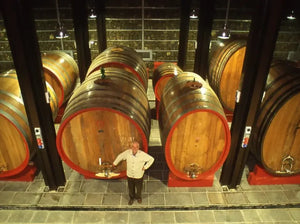Blog » Tuscany
-
The Epitome of Montalcino: Gianfranco Soldera
Soldera on the Casse Basse estate is hallowed ground in Montalcino. Founded in 1972 by Gianfranco Soldera, it's still one of Italy's most mysterious and celebrated addresses. Soldera is known for their rigorous standards in the vineyard, and selection in the cuverie is ruthless. The wines are featherweight, age-worthy beyond compare, and a model upon which all others in Montalcino follow suit.
The late Gianfranco was on vacation during my visit in 2017, but touring with his son-in-law, Paolo, who manages production, was a detailed exploration. The estate's 10 hectares of vines are adjacent to a mesmerizing garden with hundreds of flowers. The vineyard's hillside is composed of clay and galestro, a schist rock that can be broken apart in your hands, allowing vines to travel deep below the surface for nutrients. The vines grow freely, modeled after Lalou-Bize Leroy in Burgundy. But the real turn of events with the farming is the shockingly low yields, with some vines reduced to as few as three clusters prior to harvest.
The role of selection became a great theme. Soldera believes each vintage has an optimal berry size. They have a de-stemming machine that disposes of grapes outside the preferred dimensions. These select grapes ferment in massive old wood fermenters and get transferred to botti for elévage. Sulfur additions are essentially zero. After the required two years of aging, the wine goes directly from botti to bottling line, minimizing the movement as much as humanly possible.
Sampling the gorgeous 2013 vintage from botti was a haunting experience. The wine was shockingly transparent and light, beginning with its fabled weightless frame, then a saturating and deep grip. The tannins are never forceful, but that's not to underestimate the aging intended for this wine. Sangiovese takes on so many forms in Montalcino and Chianti, but here at Soldera, it seems to exist on its own plane. There's no doubt in my mind after visiting that this site is truly magical, but it's the difficult choices that are made at every stage that allow a wine of this magnitude to come to life.
.svg?v=162776257677185172071724397232)



